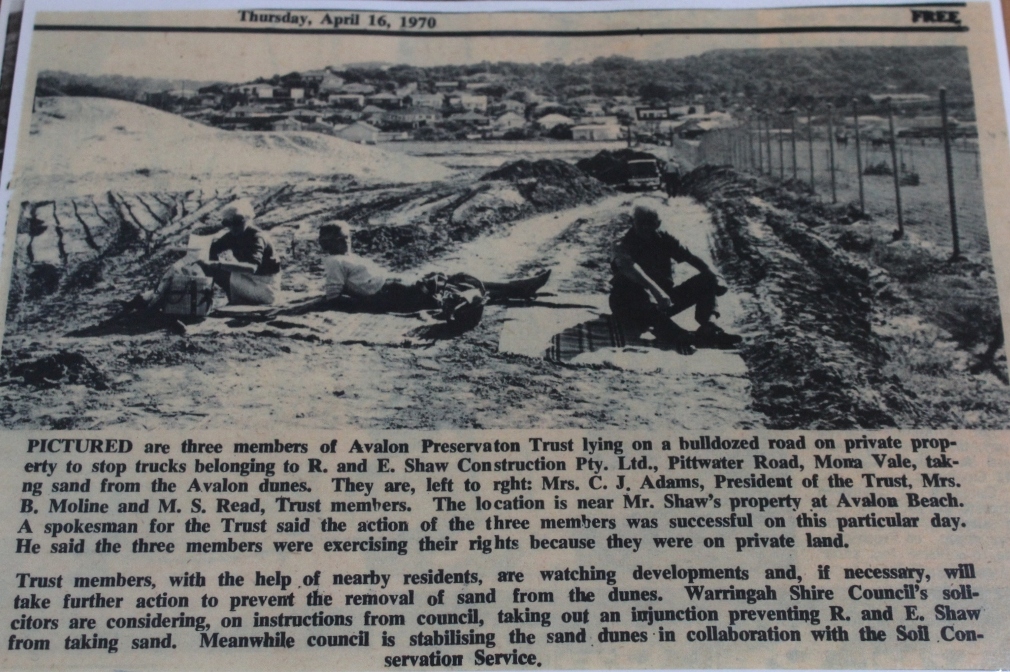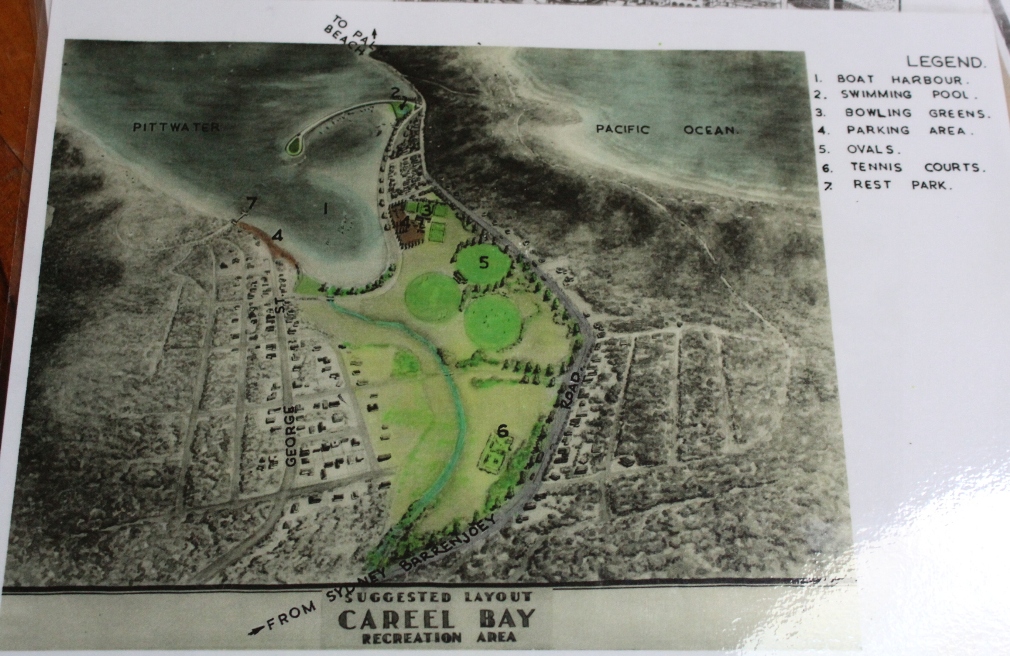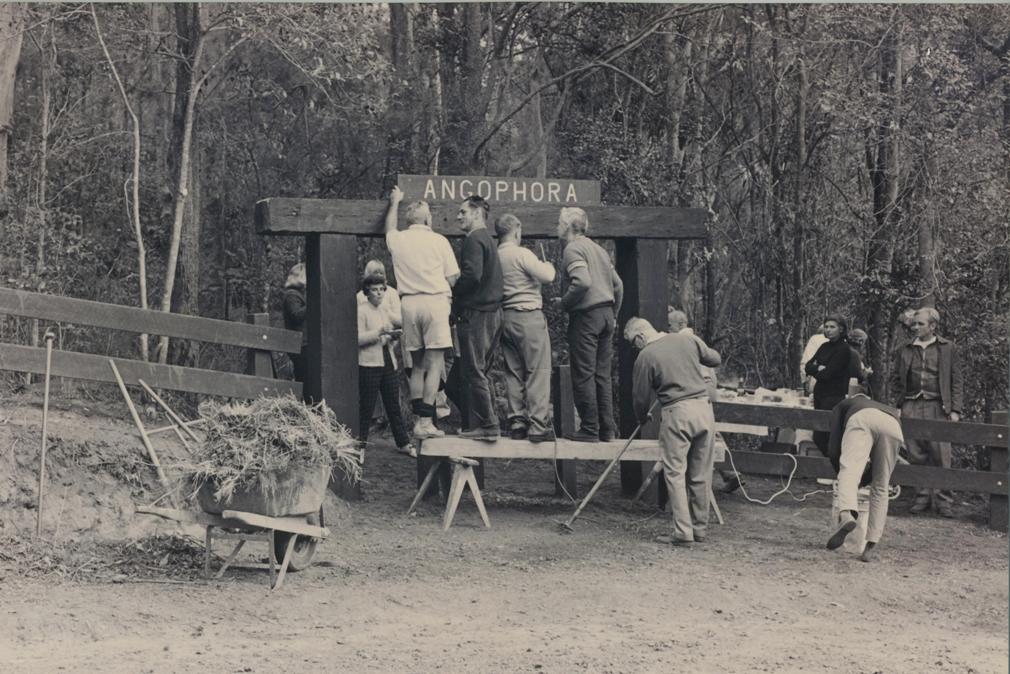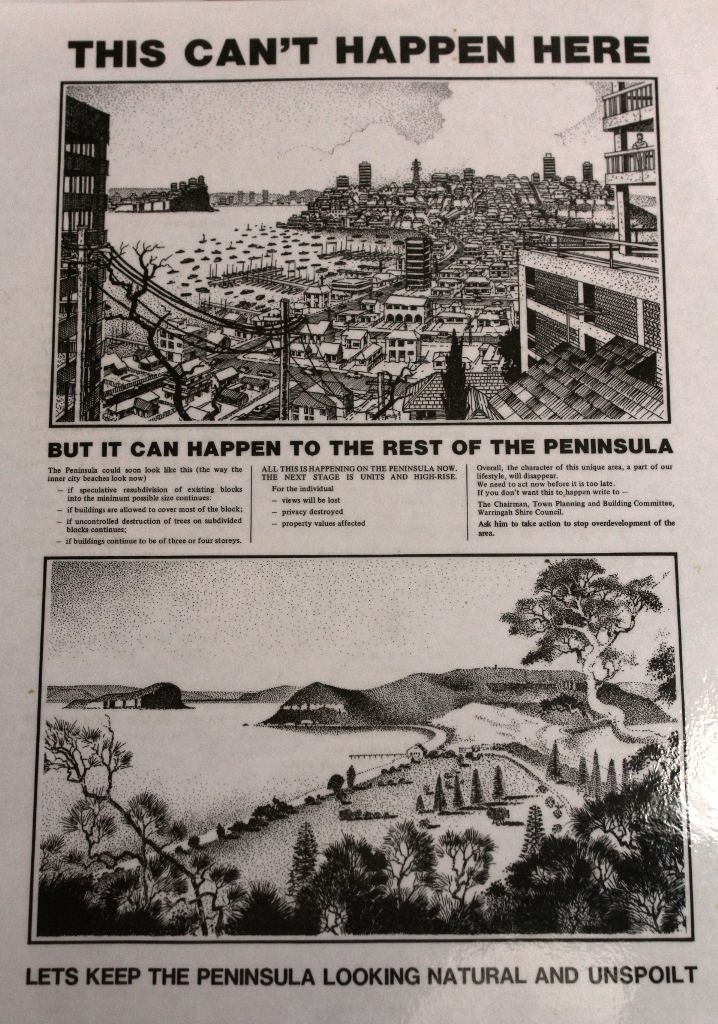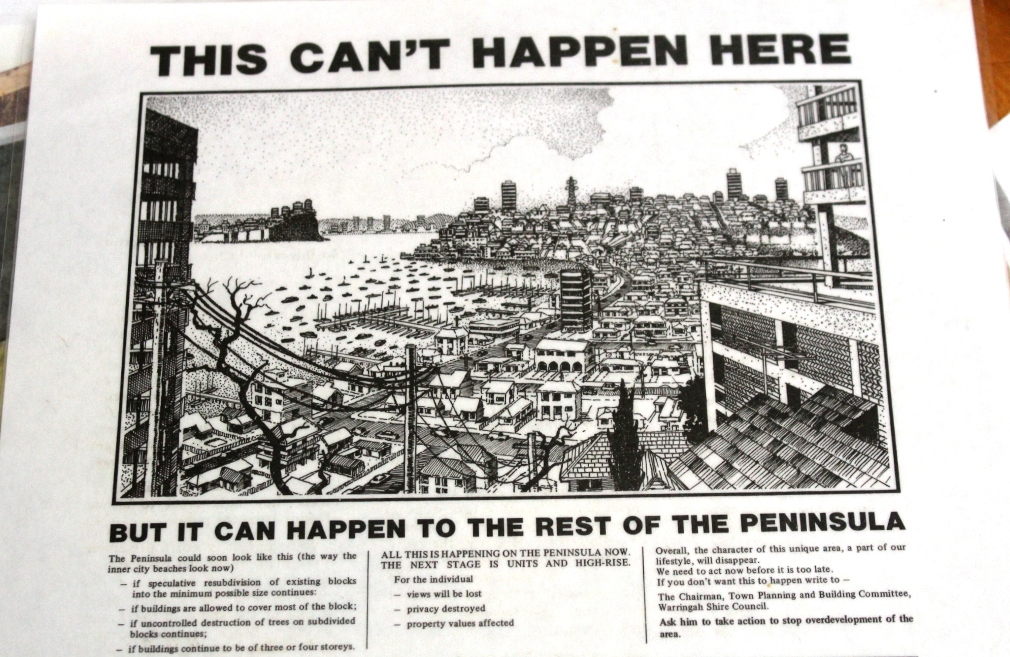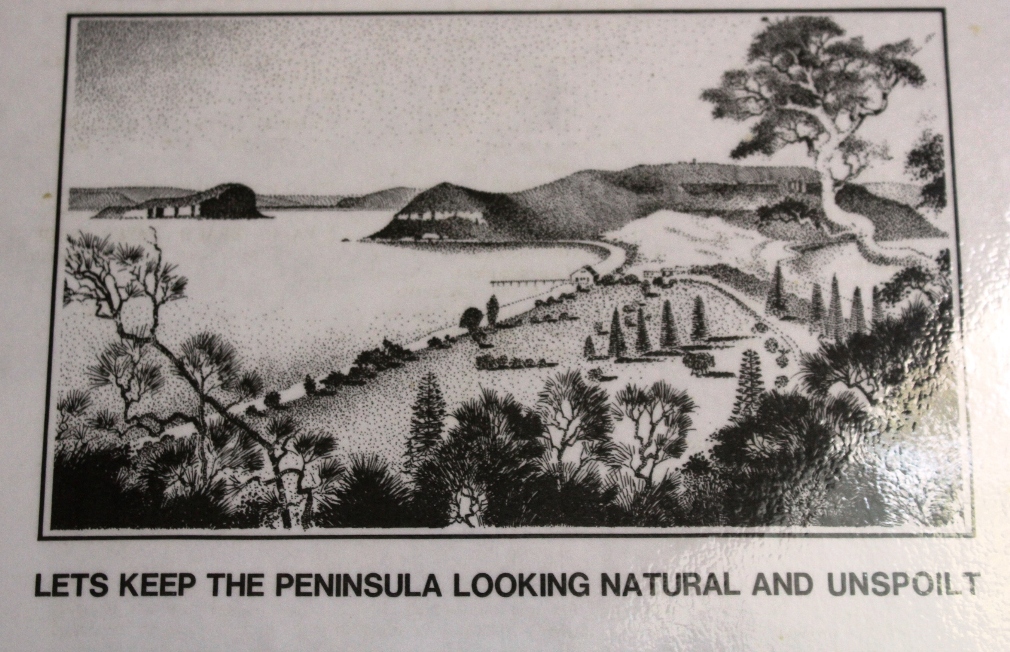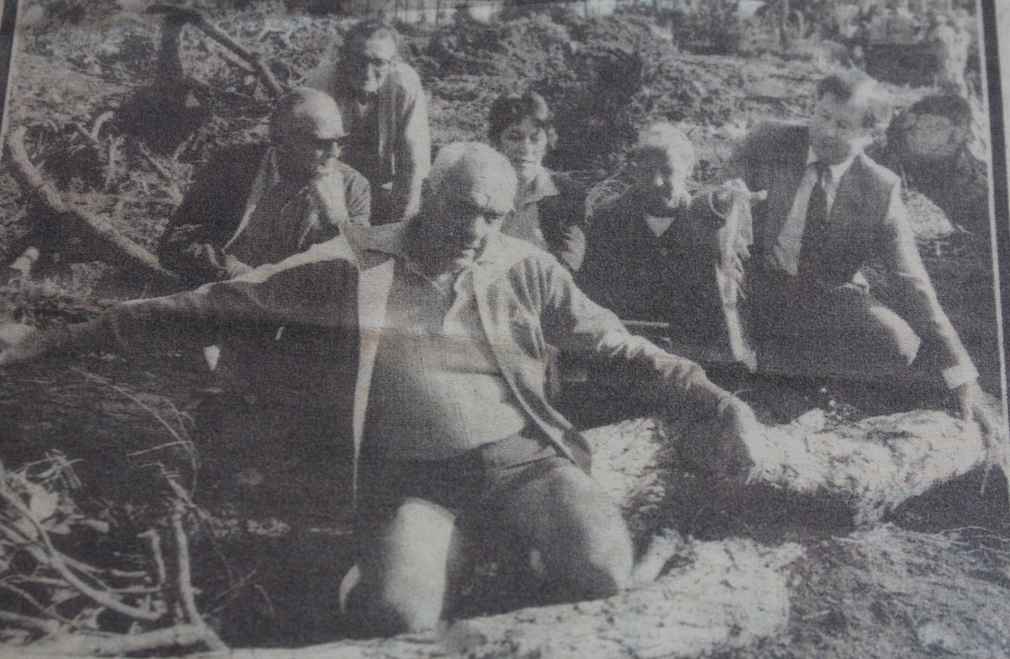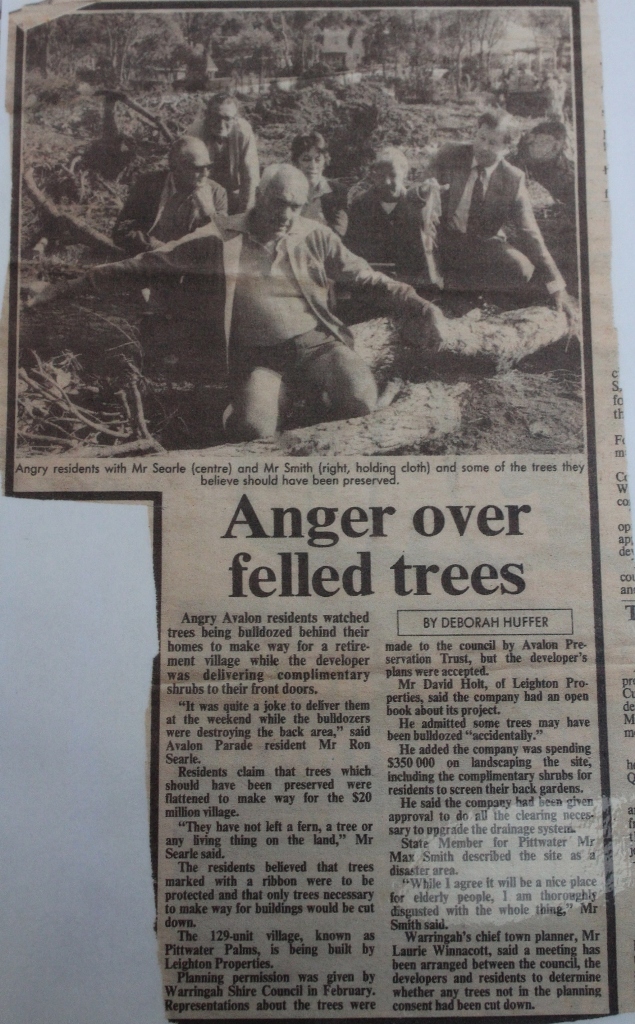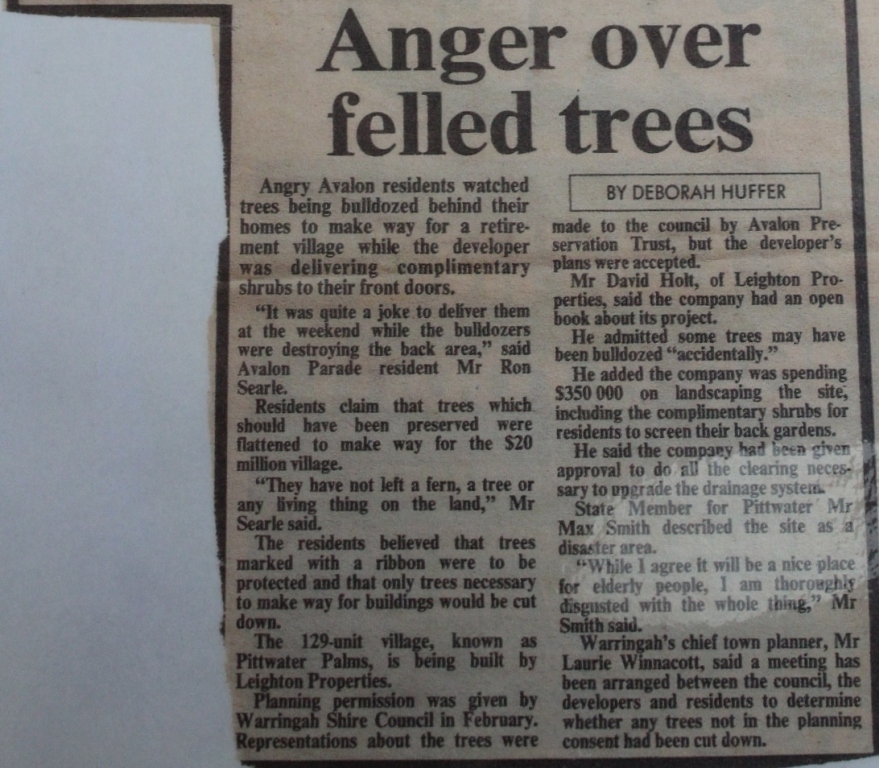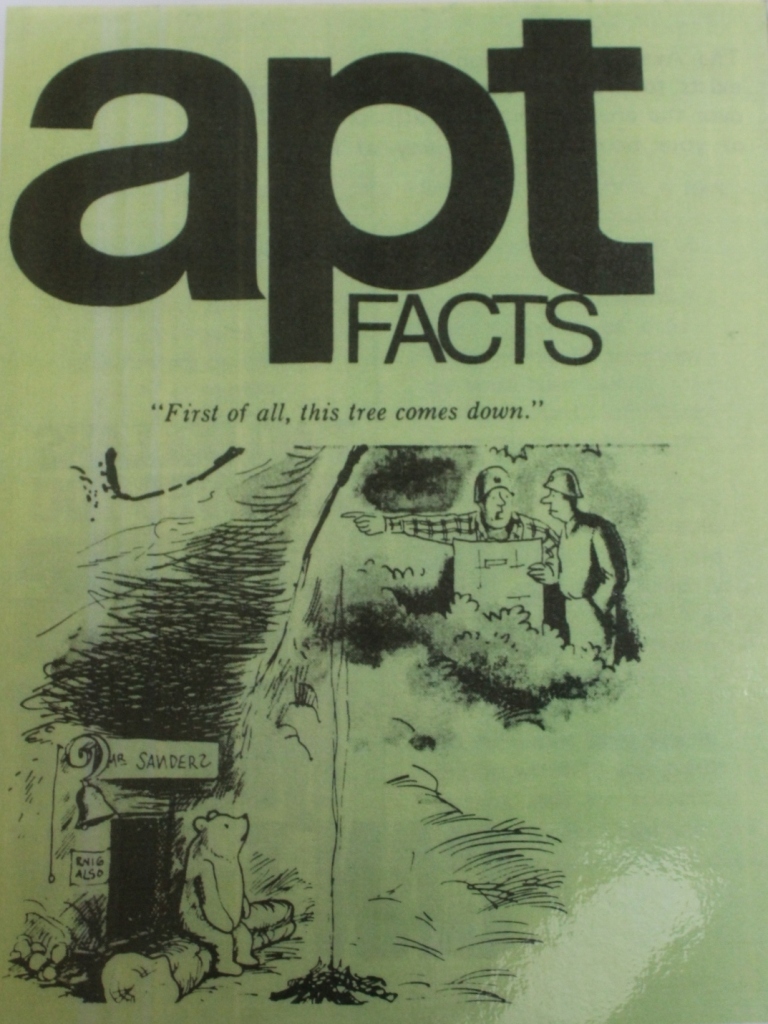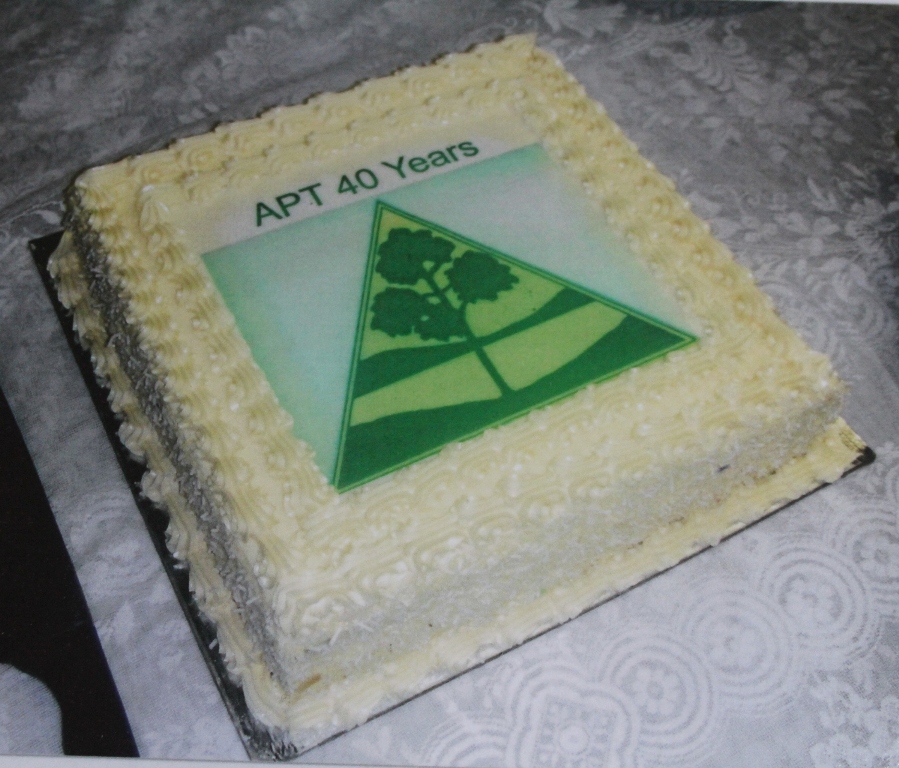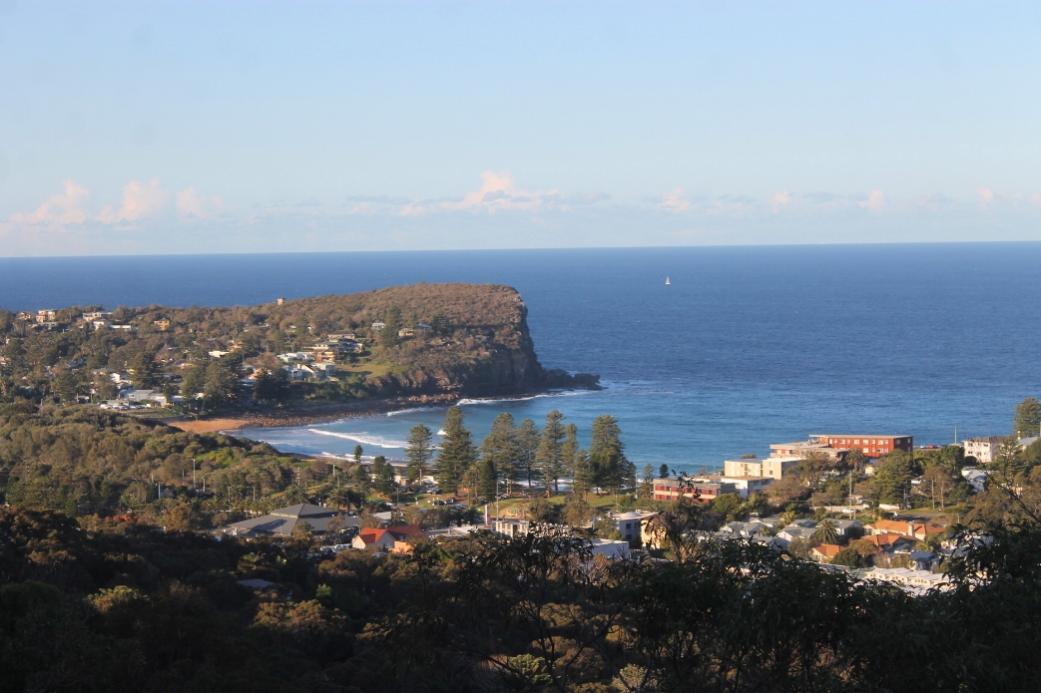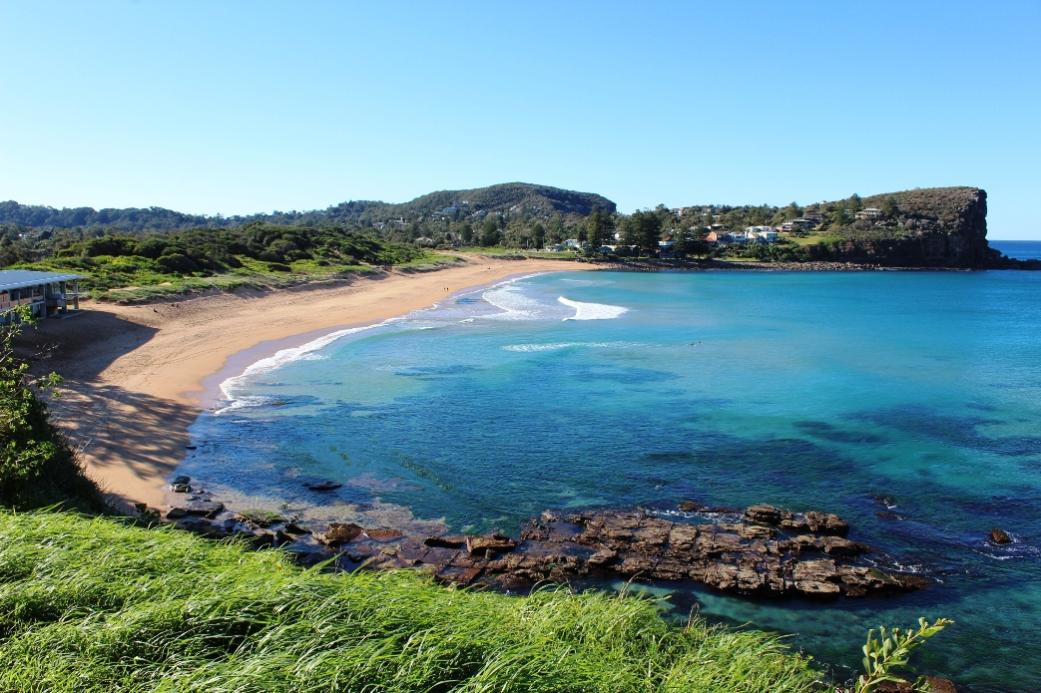AVALON PRESERVATION TRUST – An Early History
Warringah Shire Council’s ‘Amended Warringah Scheme’ to allow the zoning of 90 acres (36.5 hectares) for flats in Avalon in 1967 brought an overwhelming response.
Although Avalon Progress and Ratepayers’ Association fired the first shots, it was the impetus that stirred a new residents’ group into formation to engage in positive action.
According to ‘The Avalon News’ vol.15 no.12, the Avalon Preservation Trust held it’s inaugural general meeting in July 1967.
The new Trust wasted no time and became immediately active, opposing this new zoning. A team of members set-up in the shopping centre each Saturday to assist locals wishing to lodge objections.
Within a short time, the State Planning Authority, the Warringah Shire Administrator, the Minister for Local Government and the Member for Collaroy had been swamped with letters of protest and objections lodged on Form 1AA.
For most of the late 1960s, commercial interests had been removing tons of sand from the northern dune, which included a huge spur buttressing this dune. Repeated requests from the Trust for a court injunction from Warringah Shire Council to stop this destructive activity were constantly ignored. The Trust sent a telegram to the Minister for Local Government requesting cessation of the work and was advised that the State Planning were seeking to acquire the land for recreation purposes. The Trust was also informed that the council had the situation in hand. In truth neither had the situation in hand at all, so some members of the Trust took it upon themselves to stage a sit-in and create a vehicular barricade to stop the trucks from accessing the sand-loading equipment. Apparently this had the desired effect and a further injunction was successful. One wonders how much sand would have been left had the Trust members not brought about this action.
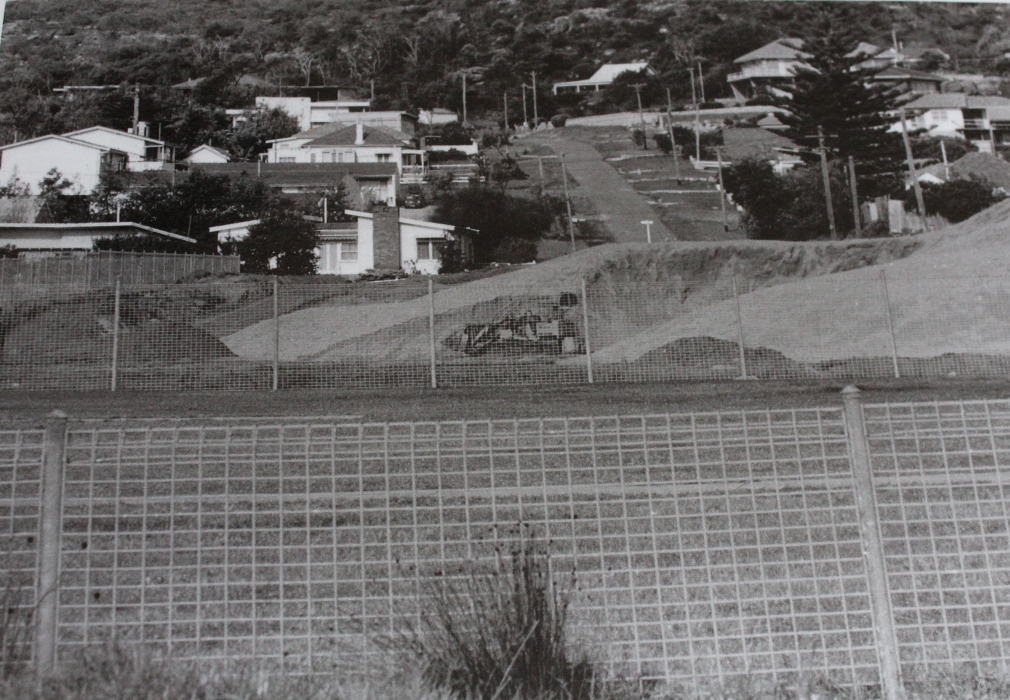
The corner of Tasman Road and Marine Parade Avalon during the sanding mining.
‘The Avalon News’ article on same - photo by John Stone - six cars were parked along the front of where the photographer has stood to take this photo
- this stopped access to the site by the sand miners
.
In 1969 a Junior Preservation Trust was formed at the excellent suggestion of a Mrs Hinds. The idea and the motive was to encourage young Avalonians to learn about the benefits of conservation for the future of their area.
During the first year of the Junior Trust members benefited from talks by persons in the wildlife and conservation fields. They also participated in museum and sanctuary trips and helping to plot koala trails and the counting of koalas.
The Trust Management Committee for the 1970/71 year was as follows;
Mr R.W. Patterson – Chairman, Mrs C.J. Adams, Mr K. Ryman, Mrs K. Ryman, Mrs E. Moline and Mr B. Campbell. Mr W. Highfield was the Honorary Auditor.
In 1971 ABC Television filmed a meeting of the Junior Trust as well as members planting trees in Catalpa Reserve with a koala called ‘Humphrey Tyson’ looking on. A copy of this documentary is held in the archives of the Avalon Beach Historical Society.
A conservation club was formed at Barrenjoey High School.
The Trust was ably represented on the Northern Beaches and Bushlands Committee with 2 delegates. The committee assisted residents from Duffy’s Forest and Terrey Hills by supporting their campaign against the push for a third airport site in their area.
Two runways already existed and were used necessarily for general aviation, feeder services, crop dusting and aerial survey work.
The threat of a larger third runway and possible jet aircraft was totally unacceptable. It took almost 5 years of continual effort until the idea was finally put to rest.
“To save a few wealthy people a few minutes’ a proposal for a hovercraft operating out of Careel Bay was mooted in 1971. The thought of a ‘thundering, spraying, churning monstrosity’ taking over the bay revolted most residents and boat owners. The Trust encouraged residents and recreational users of the bay to urgently write to the Minister for Transport expressing their dissatisfaction at this threat. Thankfully it never became a reality.
In July 1972 ‘The Australian Women’s Weekly’ saw fit to publish 3 entire pages, including coloured photographs, of the Careel Bay mangroves. The NSW Department of Lands proposed to Warringah Shire Council reclamation of most of the bay’s 60 intertidal acres (24 hectares) for playing fields and other recreation, including a marina.
The ‘Weekly’ reported that ‘the Avalon Preservation Trust was the first to leap into battle, it wants the mangroves left alone. And it has enlisted some impressive supporters. The Australian Littoral Society insisted that the mangroves are a non-renewable natural wealth of the highest order and along with the Trust, wants Careel Bay to be declared a marine nature reserve’.
The Trust became a major player on the Careel Bay Advisory Committee and a public meeting in 1975 attracted 600 people.
A 1974 report from the Water Research Laboratory confirmed that the bay must be left alone.
The committee for 1972/73 saw only a few changes.
Mr R.W. Patterson was Chairman, Mrs E. (Betty) Moline and
Mrs Connie Adams shared the duties of Vice-Chairman,
Mrs Gen. Wales – Hon. Secretary. Mr Doug Blaydon – Hon. Treasurer
Mrs Ricki Trevorrow – Publicity. Other committee members were
Mr Trevorrow, Mr Bruce Campbell, Mr Norm Poppleton, Mr John Pollock. Mr Jim Rawlings and Mrs J. Patterson.
Our Federal member, W.C. Wentworth was Patron.
At the AGM special mention was made of Ron Searl’s provision of the wall of his shop for our notice board and the taking of APT membership dues.
1974/75 saw increases in postal rates so members of the Trust chose to hand-deliver the newsletter.
ANGOPHORA RESERVE
In 1962 the Wild Life Society sought to establish a management committee for the Angophora Reserve to be known as the 530A Committee, under the control of the Warringah Shire Council. Voluntary workers cleared lantana, bridged small watercourses and burnt rubbish. Waratahs were planted and the small parking area at the Palmgrove Road entrance was constructed. Unfortunately this inaugural committee didn’t last as members moved out of the area and some passed away.
1968 saw a re-activated 530A Management Committee get underway with the assistance of Pittwater Rotary and Bert Payne (Payne’s Timber in Newport). An excellent photograph in the archives of the Avalon Beach Historical Society shows the construction of the timber fence and gateway, a fittingly rather grandiose structure at the Palmgrove Road entrance. Sadly, members in the photo - local builder Roly Jeffery, Sid Roberts who built the squash courts and Dr and Mrs Sanders (Avalon Beach’s first doctor) along with Bert Payne, are no longer with us.
This photo shows members of the newly-formed APT erecting the gateway at the Palmgrove Road entrance to Angophora Reserve in 1968 with the help of Bert Payne from Payne Timbers at Newport. The guy with the rake is Sid Roberts who built the squash courts in Old Barrenjoey Road. The guy with the ‘rings’ around his biceps is our first doctor - John Sanders. Under the ‘g’ is a local builder Roly Jeffrey talking to Bert Payne. Courtesy ABHS
This new committee was formed 1 year after the formation of the APT and so one member of the Trust became a delegate on this committee – it is assumed Connie Adams was the chosen delegate.
Members of the Trust became very active, especially planting lots of Grey Gums, the chosen food tree for the koala population.
In June 1976 ‘The Avalon News’ announced that a new management committee to care for and control Angophora Reserve was to be formed. The Pittwater Flora and Fauna Society (PFFS) had managed the control of the reserve previously but considered it would be beneficial to include ‘an equal number of delegates from Avalon and the Trust to sit on this committee. Some original members lived far afield and some unable to do much in the way of hard physical work.
This new committee consisted of five APT members, two members of the PFFS and two residents whose homes bordered the reserve.
Plans were drawn up by landscape architect (and member of the committee) Don Irving and objectives established. Lantana and privet were both attacked and cleared and pathways made more accessible. The idea of a tourist kiosk in the reserve was very smartly squashed.
Advertisement supported by the Avalon Preservation Trust, The Palm Beach Association and the Whale Beach Preservation Society’.
The advert was paid for ‘by a number of residents of the Peninsula because they were deeply concerned about the change that is occurring to the character of the area’.
It was drawn by Tony Edwards (aka Captain Goodvibes from early Tracks magazine) who at the time was living in ‘Windy Ridge’ up on Sunrise Hill and he drew this from his balcony. Circa 1970s.
The Management Committee in 1988 had grown quite large and now had 4 adjacent residents assisting along with some talented co-opted advisors. Unfortunately this committee was not a lasting one either and the care of the reserve these days is managed by an enthusiastic group of volunteers, including members of the Trust. They have been working every 3rd Sunday of the month since February 2010 when the group was formed.
The Trust newsletter of 1977 made mention of the decision by the Boundaries Commission to amalgamate both Manly and Warringah Council. Mr Ferris, Chairman of the Commission (and Minister for Local Government said that ratepayers can either ‘take it or leave it’) which the Manly Daily translated as ‘like it or lump it’. Eventually he refused to poll ratepayers because he now had ‘considerable reservations of this as a reflection of public opinion’. The LGA unanimously agreed that no amalgamation involving any municipality should occur unless a poll of residents favoured amalgamation.
In 1979 the Trust was very critical of some of the work proposed by the Metropolitan Water and Sewerage Board, especially in regard to the path taken by the sewer line through Angophora Reserve. The Trust Committee did not agree that ‘environmental destruction was the price we would have to pay for sewerage’. Attention would also be given to the works associated with the construction of the several pumping stations that were being constructed in the area.
In 1985 the Pittwater Palms retirement village was mooted and on behalf of the Trust, Connie Adams approached the Heritage Council to ‘put an interim conservation order on the site to preserve existing trees’. Leightons asked for Council’s approval of change of consent.
The Ombudsman replied that he could ‘under his act, do nothing to help us’. The Trust then asked the Councillor Frank Beckman to have council defer consideration of plans until after the Heritage Council had approved it.
This was the straw which broke the koalas backs. It severed the corridor necessary for their transit from the grey gums (their food trees of choice) in Angophora Reserve to those in Stapleton Park.
Ron Searl and then State MP for our area Max Smith - ABHS newspaper clipping - Manly Daily; 'He admitted some trees may have been bulldozed 'accidentally'
Chairman Garvon Kable had attended several meetings with the Chief Engineer of the Department of Main Roads (DMR) and local member Mr Max Smith concerning the Bilgola Bends. The DMR thought widening the bends in association with the new ‘Bendy’ Buses would be an appropriate move until WSC refused their application to use 60 square metres of Hewitt Park to widen the western (and sharpest) corner. The spoil created by premature excavation in preparation for the widening of the bends was then deposited on the southern side of the valley. This eyesore was hurriedly planted out using native shrubs and trees after the National Trust announced (via Garvon Kable) in August 1985, that ‘the DMR have abandoned their plans to make a four-lane highway across the valley’.
June 1989 saw the first Avalon Preservation Trust newsletter ‘roll off the press’. It was agreed at the AGM in March that a newsletter would be an effective way to keep members informed of the activities and issues involving the trust.
One of the early membership forms
The first item recognised the marvellous effort of the Trust’s Vice-Chairman, Connie Adams, in having the Angophora Reserve included in the National Estate Register. The Heritage Commission considered that the area has a national significance in our heritage providing ‘an important refuge and protected movement corridor for fauna, particularly Sydney’s diminishing koala population’. The areas value in terms of flora such as the Spotted Gum communities (which used to be widespread on the peninsula) was also noted. The Aboriginal rock-shelter and its social and spiritual significance to the Aboriginal community in pre-European times was also noted.
Besides holding the position of Vice-Chairman of the Trust, Connie was also Chair of the Management Committee of the Angophora Reserve. An appropriate plaque is mounted on a sandstone plinth at the Palmgrove Road entrance to the reserve commemorating her devotion to the preservation of the reserve.
The article finished with ‘….. residents of the local area are indebted to Connie for her generosity with her time, the thoroughness of her research and her indefatigability when pursuing an issue’.
The newsletter also announced that ‘Koalas are still on the move and we have koala food trees for sale at 80 cents for members and $1.00 for non-members’.
Garvon Kable handing over reigns as Chairman at 40th Anniversary of APT
By Geoff Searl
President, Avalon Beach Historical Society

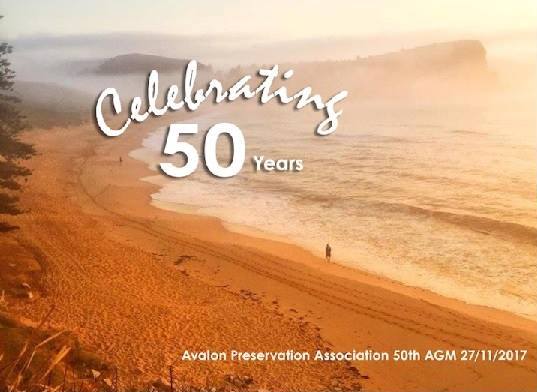 Avalon Preservation Association
Avalon Preservation Association
